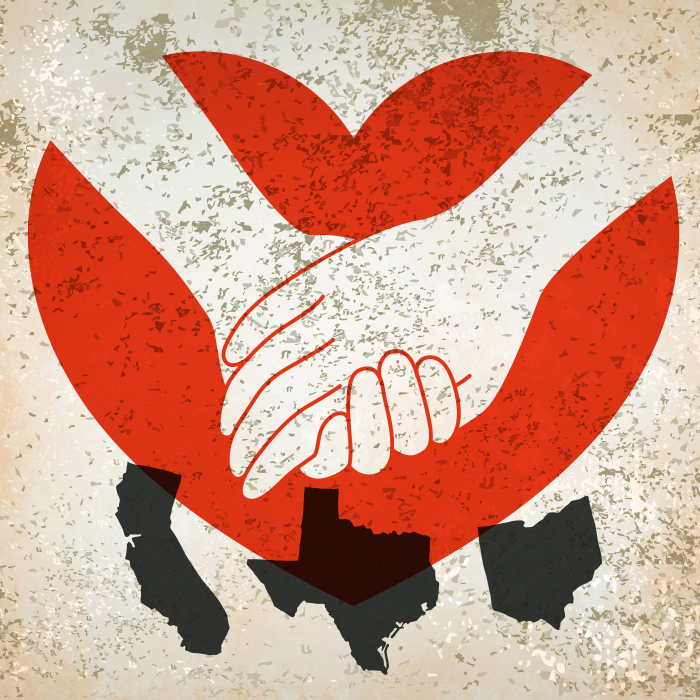Violence begets violence
Written by Kelly White
What more can be said that will add to the current discourse and horror swirling around the recent massacres in Gilroy, Dayton, and El Paso?
- The Gilroy shooting is now being investigated as domestic terrorism.
- Dayton’s terrorist killed his own sister, as well as eight others – nine people in 30 seconds. He reportedly compiled a “rape list” for girls and a “hit list” for boys while still in high school.
- Hatred, racism, and bigotry have been identified as key motivators for the 22 deaths in El Paso. The historical oppression that continues to make society unsafe for people of color and people who have immigrated to the U.S. is the same oppression that contributes to the types of abuse that The SAFE Alliance works to stop – including relationship violence, sexual violence, and sex trafficking. People of color face a greater risk of violence, whatever form that violence may take.
In our horror, we look for answers. We blame violent video games, mental illness, almost unfettered access to guns, the far right, the far left, and the violent vitriol against women, immigrants, people of different faiths, ethnicities, sexual orientations, and other historically oppressed groups.
We have a society to change. At SAFE, we do our best to teach and model tolerance and respectful relationships across genders, faiths, sexual orientations, ethnicities, nationalities, and more. At the same time, our counselors and advocates provide healing to people who have experienced trauma, which helps prevent that trauma from being passed on.
To stop the violence, we must understand the root causes of why these young men, and other mass shooters, evolve into killers. A recent Op-Ed published in the Los Angeles Times provides us with valuable insights from research funded by the National Institute of Justice.
In studying every mass shooting since 1966, they have learned that the vast majority of mass shooters experienced early childhood trauma and exposure to violence at a young age. The researchers state: “The nature of their exposure included parental suicide, physical or sexual abuse, neglect, domestic violence, and/or severe bullying.”
We know that violence too often begets violence, that one of the best predictors of future victimization is past victimization, and that two of the most consistent factors associated with future violent outcomes (as victim and/or perpetrator) are child abuse and exposure to domestic violence.
Violence and victimization aren’t inevitable. Children can heal when they are provided healthy, safe, and nurturing relationships. We work to help everyone build resilience.
Yes, it is imperative that we better control access to weapons that can cause such rapid and lethal destruction; change how we consume, produce, and distribute violent content on media and social media; and provide access to comprehensive and affordable mental health treatment.
We also must acknowledge and respond to the trauma that serves as the breeding ground for hate, blame, and violence.
Last year, SAFE responded to 19, 513 SAFEline contacts (calls, chats, and texts) and provided 106,390 bed nights/days of care for children, individuals, and families escaping violence and abuse. We are serving people who have experienced sexual assault and exploitation, child abuse, and domestic violence – and every one of our programs operates at capacity, often with a waiting list. Through prevention work and social change, we are also working to change the social norms and interactions that serve as a breeding ground for violence and oppression.
The epidemic of violence is often transferred across generations, from person to person. As a society, we are not dedicating the resources and attention needed to stop this cycle of violence.
And too often, the results are devastating